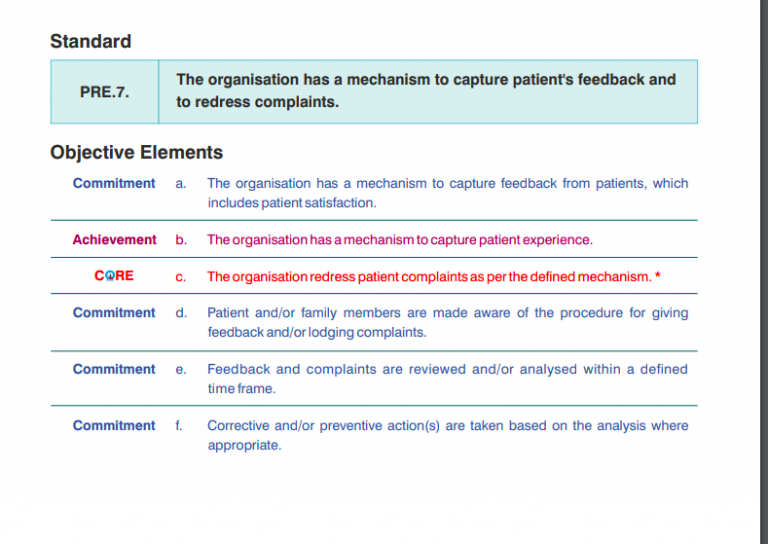A Guide to NABH Compliance for Patient Satisfaction Surveys

An NABH accreditation is a prestigious recognition for any hospital in India. As of March 2022, more than 650 hospitals in India have got an NABH accreditation. This blog gives an overview on NABH accreditation and specifically focuses on the NABH standard related to patient feedback and redressal of complaints.
Key Takeaways:
- An NABH accreditation is a prestigious recognition for Indian hospitals
- It implies compliance with different NABH standards related to patient safety and quality of care
- Among the 100+ NABH standards, one standard focuses on mechanisms of capturing patient feedback and redressing complaints
- To adhere to this standard, hospitals should design the right and relevant questions
- Technology can help hospitals comply with this standard by capturing a higher number of feedback and also enabling faster resolution of complaints
NABH Accreditation: An Overview
The full form of NABH is National Accreditation Board for Hospitals & Healthcare Providers. An NABH accreditation means a hospital is compliant with the 100+ NABH standards covering different aspects of patient safety and quality of care. These 100 standards are spread across 10 chapters. Details on these 100 standards and 10 chapters can be found in the official document, titled 5th edition of NABH Accreditation Standards for Hospitals.
An example is Chapter 4, which covers the guidelines related to patient rights and education. This chapter sets the guidelines for an organisation to protect and promote the rights and responsibilities of patients and their families.
This particular chapter has 10 standards. Likewise, each of the other 9 chapters cover the rest of the NABH standards.
NABH Standard for Patient Feedback and Redressing Complaints
Among the 100 NABH standards, one of the standards (PRE.7) focuses on the mechanisms of capturing patient feedback and redressing complaints.

In light of the above NABH standard requirements, hospitals need to know the key parameters that should be part of the patient satisfaction survey.
Tips for Asking Questions to Adhere to the NABH Standard for Feedback
NABH, as a mandate, stipulates that organisations should conduct patient satisfaction surveys for their OPD, IP, and PHC centres. However, it does not prescribe whether you need to incorporate 10 or 30 questions or hit 97% patient satisfaction rates or 70%. These are organisational decisions.
However, if the organisation is committed to patient excellence, it would be a logical extension to ensure that you try and understand how the patient perceives the services you have delivered in a 360-degree manner. At the same time, you should avoid tiring the patients out with a barrage of questions. NABH cares that the organisation is focused on continuous quality improvement.
Include a Variety of Probing Questions:

Going through each of the ten chapters in the NABH guidelines, you can derive many probing questions. Some of these would be related to as follows:
- Was the patient able to receive clear and concise information when they contacted the hospital?
- Speed of the emergency response
- Basis assessment was there sufficient explanation provided about the assessment done, diagnosis, etc.
- Patient perception of the relevance of tests conducted
- Timeliness of reports received from the laboratory
- The experience at critical areas like the blood bank and organ donation service
- Communication and care by the staff, including doctors and nurses, the OT service, and post-operative care experience
- How confident was the patient that the staff was taking adequate and precise safety measures like sterilization, hand washing, etc?
Avoid Asking Irrelevant Questions
Care needs to be taken to see that the questions in the feedback form are relevant over a period of time. A case in point: In the OPD feedback form of a large corporate hospital, there was a question about the waiting area. The feedback received was consistent that it was small.
However, management could not do much about it since there was an infrastructural constraint. So, this question irritated and agitated the patients. They jumped to the conclusion that the management did not care, and the feedback exercise was pointless. It would be prudent to keep the patients aware of changes based on the feedback received in such cases. Also, hospitals should avoid asking questions where significant insights have already been attained.

Keep the Questions Simple and Easily Understandable
The importance of keeping the questionnaire in a simple format for ease of understanding cannot be overstated. Case example: In a top tier city’s NABH-accredited hospital, the OPD form suggested that 1 is a low score and 5 means great experience. However, the patients would tick one most of the time.
On further probing, it became clear that the patient did not read the form carefully and by default felt that the No. “1” means good and No. 5 means bad and marked accordingly. So structuring the questionnaire to facilitate ease of understanding would enable you to get accurate results.
Use Technology for Feedback Collection
To capture authentic feedback from patients, it is important to make the patient feel comfortable enough to express. Besides, it is essential to make it easy and convenient for them to provide feedback.
For example, a large hospital in India was providing pen and paper to patients to fill out the survey form post-discharge. Consequently, it could not capture significant inputs and get a sufficient sample size for their NABH audits.
Using BestDoc’s feedback solution helped them increase their feedback collection since patients were provided with multiple feedback options. The intelligent notification capabilities of the solution helped notify departments that received sub-optimal feedback leading to faster redressal of complaints.
Final Thoughts
NABH accreditation plays a big role in boosting a hospital’s reputation. It gives patients an assurance that the hospital is serious about patient safety and quality of care.
Having been in the industry for over a decade, I have encountered two types of organisations. There are those that embrace the NABH standards for short-term goals and those that have adopted it as a philosophy for long-term development.
The difference in the two approaches would be evident in the very fabric of the organisation’s culture and outcomes as well, with the latter tilting to a delighted patient experience and greater customer loyalty.
Of the total 100+ NABH standard, an important standard is linked to patient feedback. Our BestDoc Surveys solution makes it easy for patients to answer feedback questions through various digital channels. Hospitals have also used our solution to provide patients with the option of answering in their native language.
Click here to know more.
6 Mins Read
Written By | Pooja George




